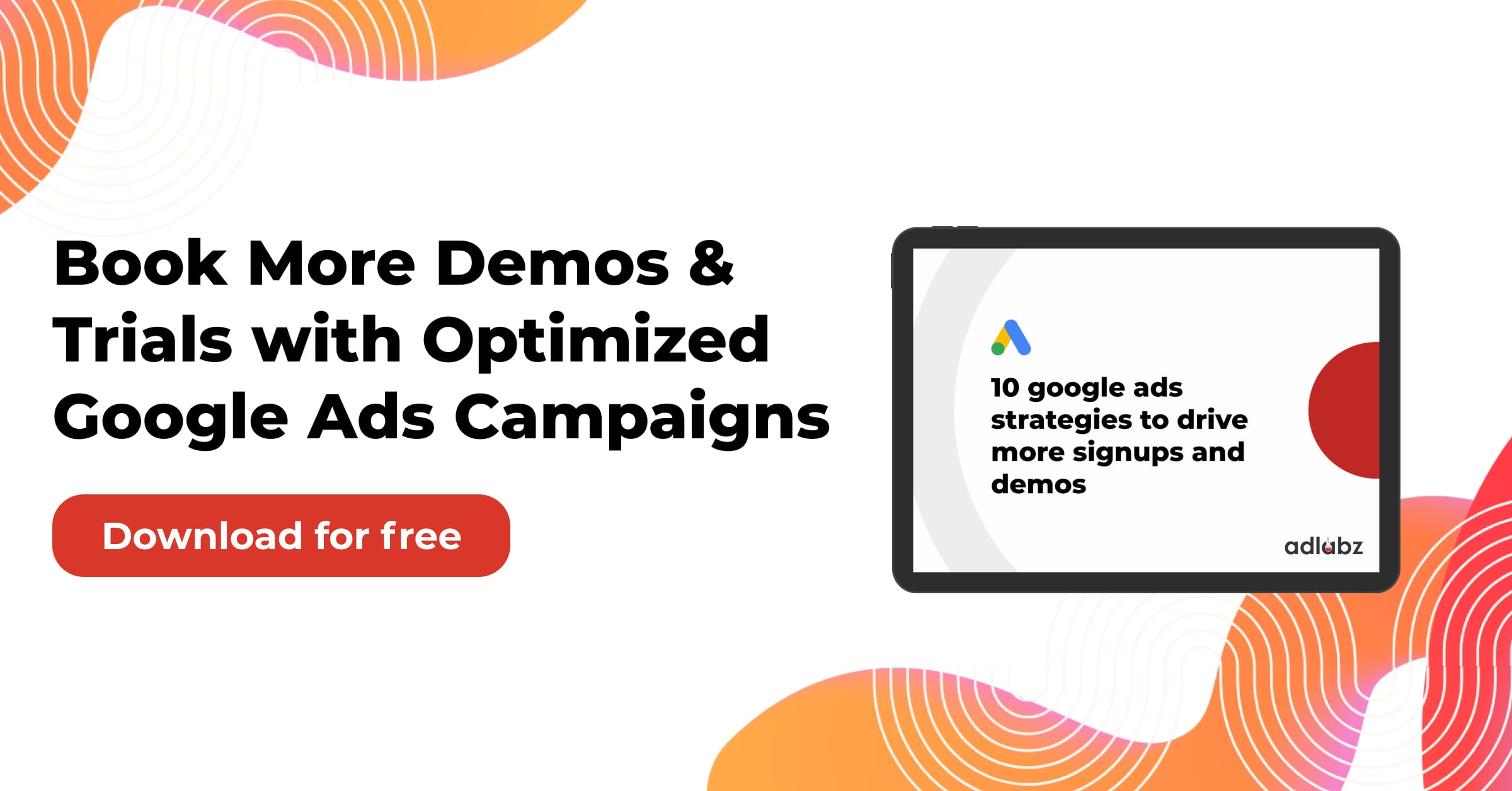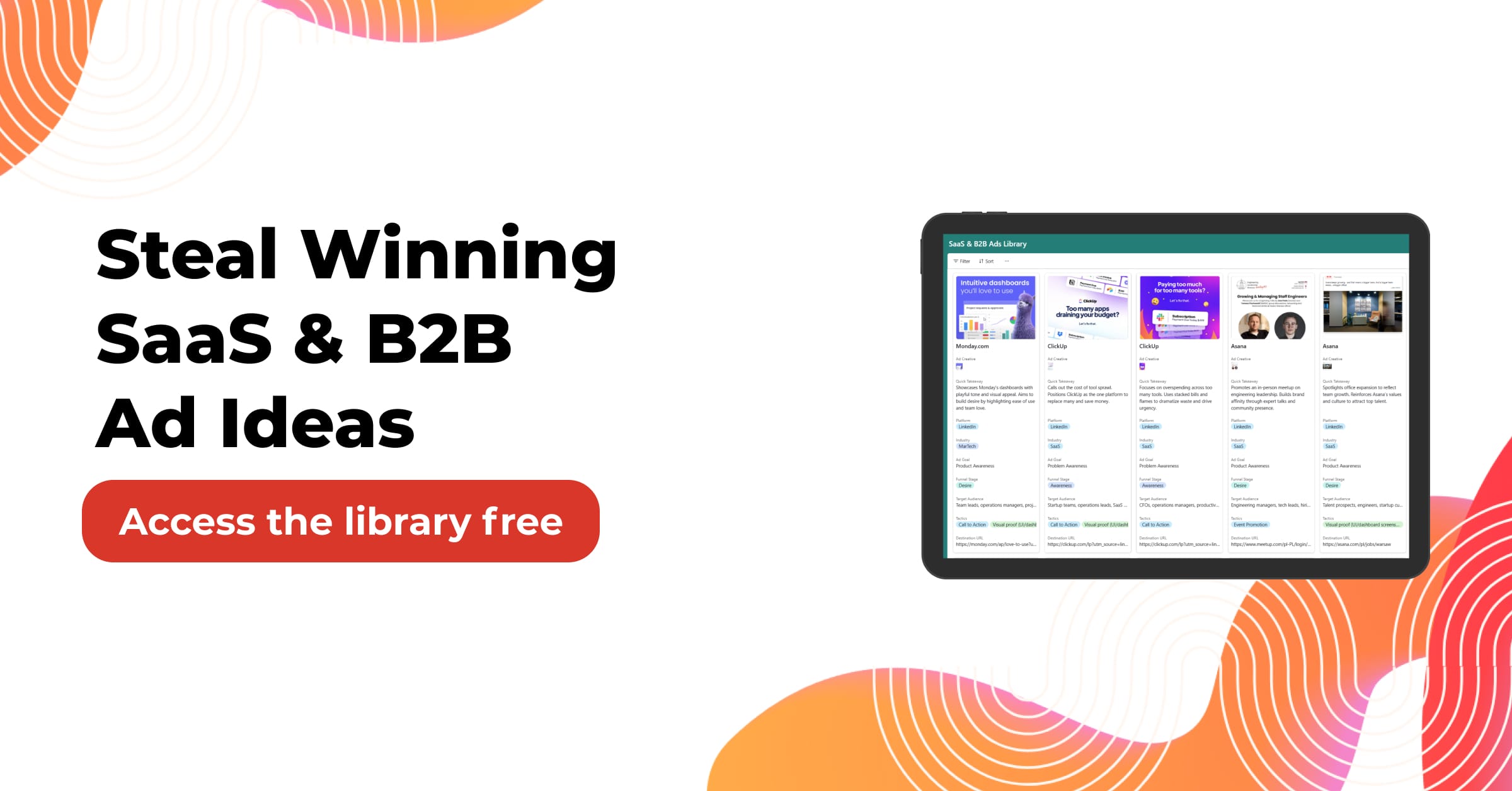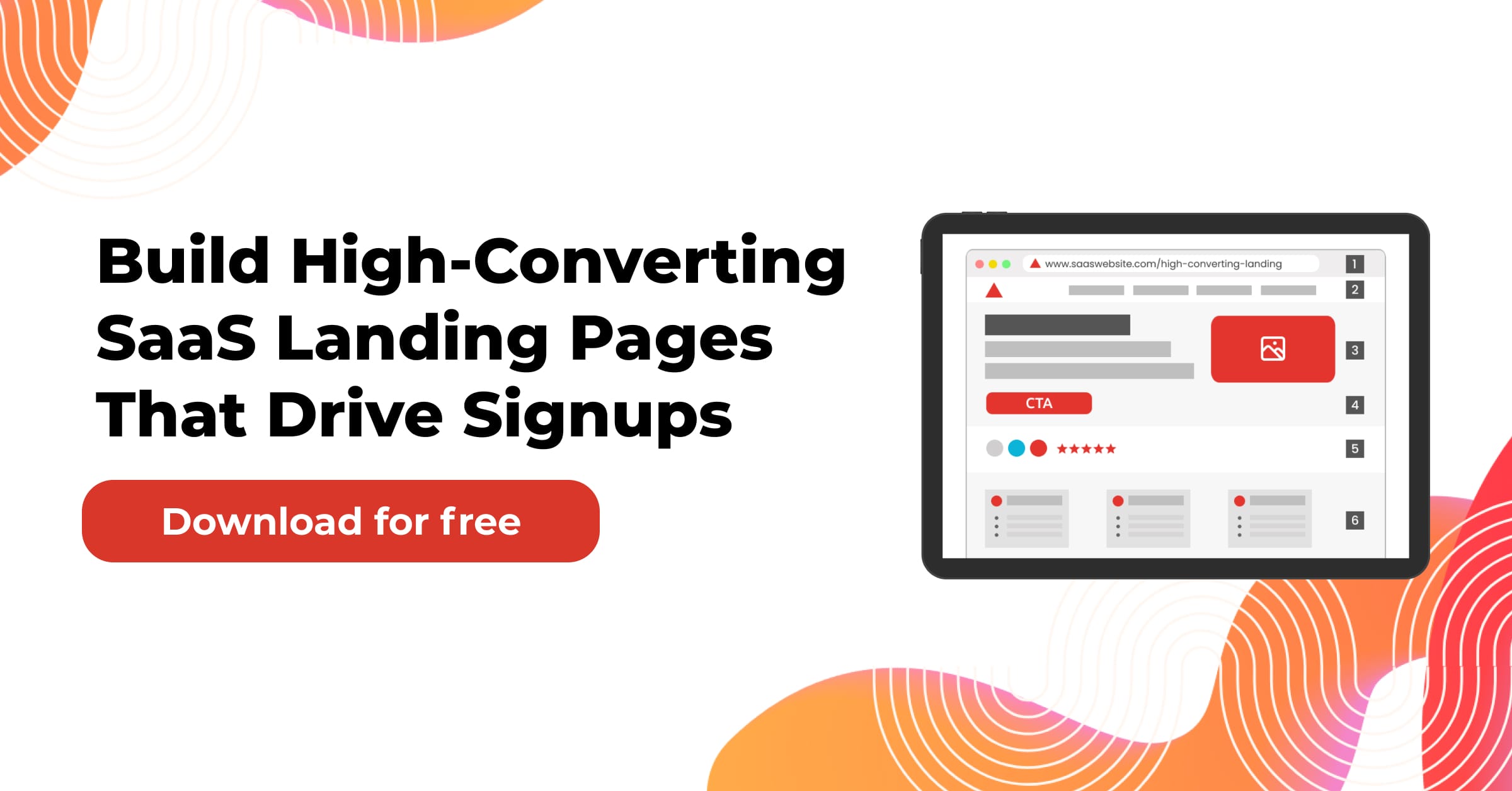If you’re a SaaS startup founder, you’re likely focused on MVP development, user acquisition, and product-market fit. Integration? That feels like a “later” problem.
But it’s not.
An integration strategy is a plan for how your SaaS product will connect with other tools your users rely on, CRMs, payment gateways, ERPs, calendars, support tools, and more.
Without it, your users are forced into workarounds, data silos, or worse, abandoning your platform altogether.
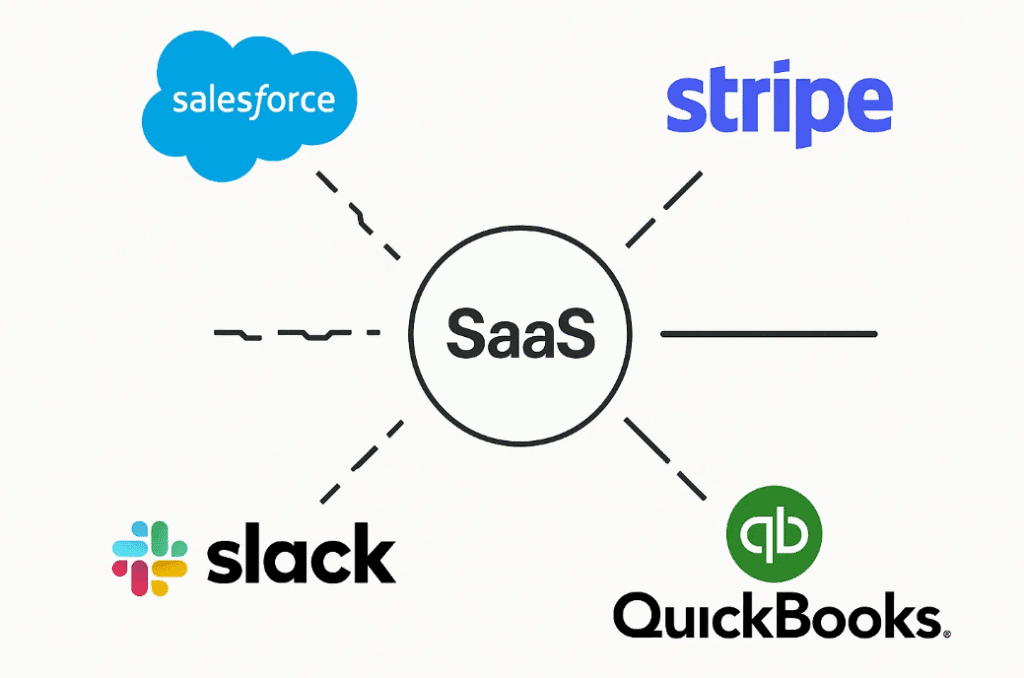
Jump to:
Why Do SaaS Startups Lose Customers Without Integrations?
Imagine selling a customer onboarding tool, but your users can’t sync their CRM.
Or running a time-tracking SaaS, but it doesn’t push timesheets to payroll systems.
When users can’t connect your product to their core stack, friction builds. Fast.
Here’s what happens without integrations:
| Problem | Result |
|---|---|
| Manual Data Entry | User frustration, errors |
| Duplicate Workflows | Inefficiency, tool abandonment |
| Poor Reporting | Incomplete or inaccurate insights |
| Low Adoption | Your product gets sidelined |
Example:
A B2B SaaS tool for task management failed to grow because it didn’t integrate with Slack or Google Calendar, two tools users lived in daily. Competitors with even partial integrations outpaced them.
Related Guide: https://www.youtube.com/watch?v=k8hG6jZsMLU&pp=0gcJCcwJAYcqIYzv
What Integrations Should a SaaS Startup Prioritize?
The answer depends on your niche, but here’s a general rule: integrate with what your users already use.
Ask yourself:
- What tools do users use before my product?
- What tools do they use after or alongside it?
- What tools are mission-critical in their industry?
Table: Common Integrations by SaaS Category
| SaaS Category | Priority Integrations |
|---|---|
| CRM | Gmail, Outlook, Zoom, Slack |
| HR SaaS | ADP, BambooHR, Gusto |
| Finance SaaS | QuickBooks, Stripe, PayPal |
| Marketing SaaS | HubSpot, Mailchimp, Meta Ads |
| Dev Tools | GitHub, Jira, Slack |

Is It Better to Build Native or Use Third-Party Integration Platforms?
As a SaaS startup, you have limited dev resources. So, should you build native integrations, or plug into iPaaS (integration platforms like Zapier or Workato)?
Here’s a comparison:
| Option | Pros | Cons |
|---|---|---|
| Native | Full control, better UX | High dev cost, time-intensive |
| iPaaS | Quick to launch, scalable | Less control, limited UI/UX |
| Open API | Community-driven, flexible | Needs documentation, support team |
Best Practice:
Start with iPaaS or open APIs early to show intent. Build native integrations for your top 3–5 most-used apps once you gain traction.
Example:
Calendly started with integrations via Zapier and public APIs. As usage grew, they rolled out native Google Calendar and Zoom integrations for smoother onboarding.

How Does Integration Affect Product-Led Growth?
If you’re pursuing Product-Led Growth (PLG), and most SaaS startups are, then integrations are fuel to that fire.
Here’s how they amplify PLG:
- Shorter Time to Value:
Integrations allow users to see value faster by connecting your product to data they already have. - Higher Activation Rates:
Users who connect your app to another tool are more likely to convert to paying customers. - Network Effects:
The more tools your product connects with, the more likely it becomes part of your customer’s daily workflow.
Example:
A marketing analytics startup saw a 40% increase in demo-to-paid conversions after introducing a Shopify integration. It instantly pulled data without needing CSV imports.
What Happens If You Delay Integration Planning?
Most SaaS startups think, “We’ll integrate once we get customers.”
But here’s what happens instead:
| Delay | Consequence |
|---|---|
| Customers churn early | Because they can’t sync your tool |
| Development backlog explodes | Every customer requests something different |
| Your API becomes hard to scale | Because you didn’t plan extensibility early |
Long-Term Risk:
You become “yet another siloed tool” in a sea of SaaS. Integration debt accumulates fast.
Example:
A scheduling SaaS hit $10K MRR but couldn’t grow further because its architecture couldn’t support webhook events or authentication flows without breaking.
What Are the Must-Have Features in an Integration-Ready Architecture?
To be integration-ready from day one, your SaaS startup should include:
- Webhooks — so data can be pushed in real-time
- REST APIs — standard, well-documented, with token-based auth
- OAuth 2.0 — for secure third-party connections
- Modular Data Models — to map external schemas easily
- Error Logging & Retry Queues — for data sync reliability
Table: Example Use Case Setup
| Feature | Use Case |
|---|---|
| Webhooks | Send data to Slack when task is completed |
| OAuth | Let users connect their Google account securely |
| Retry Logic | Resend failed syncs with Stripe invoices |

How Can a SaaS Startup Market Integrations for Growth?
Integrations aren’t just a feature; they’re a growth lever.
Here’s how to use them in your marketing:
- Landing Pages:
Create dedicated pages for each integration with SEO-friendly content (e.g., “How to Use [Your Tool] with HubSpot”). - Co-Marketing:
Run webinars, blogs, or email campaigns with the partner tool you’ve integrated with. - In-App Promotion:
Use onboarding checklists and tooltips to prompt users to connect integrations early.
Example:
A SaaS billing tool grew organic traffic by 20% by creating individual landing pages for each of its 25 integrations, targeting long-tail keywords like “QuickBooks integration for SaaS billing.”

How to Prioritize Integration Requests?
Not every customer request needs to become an integration.
Use this matrix:
| User Volume | Strategic Value | Priority |
|---|---|---|
| High | High | Build native |
| Low | High | iPaaS or open API |
| High | Low | Reuse existing connectors |
| Low | Low | Defer or discard |
Tip: Add a feedback form or voting board so users can request and upvote integration ideas. Tools like Canny or Frill work great for this.
When Should You Hire a Dedicated Integration Engineer?
Early on, you can get by with generalist developers. But once you:
- Have 5+ active integrations
- Are you building SDKs or partner APIs
- Handle thousands of sync events daily
…it’s time for a dedicated integrations engineer or team.
Benefits:
- Quicker turnaround on partner APIs
- Scalable architecture
- Better monitoring/debugging
Tip: Consider building an “Integration Layer” in your codebase to handle data mapping, auth, and sync tasks in a modular way.

What’s the ROI of a Strong Integration Strategy?
Let’s talk numbers. A solid integration strategy leads to:
| Metric | With Integrations | Without Integrations |
|---|---|---|
| Activation Rate | 45–60% | 20–30% |
| Churn Rate | 2–5% | 8–12% |
| Expansion Revenue | +20–30% | Limited |
| NPS Score | +15 pts higher | Frustration from users |
Example:
A PLG-focused SaaS company doubled its MRR within 6 months by launching 10 integrations with tools like Notion, Asana, and Slack, driven by direct feedback and usage data.
Must Watch: https://www.youtube.com/watch?v=BP81a0_6dtI
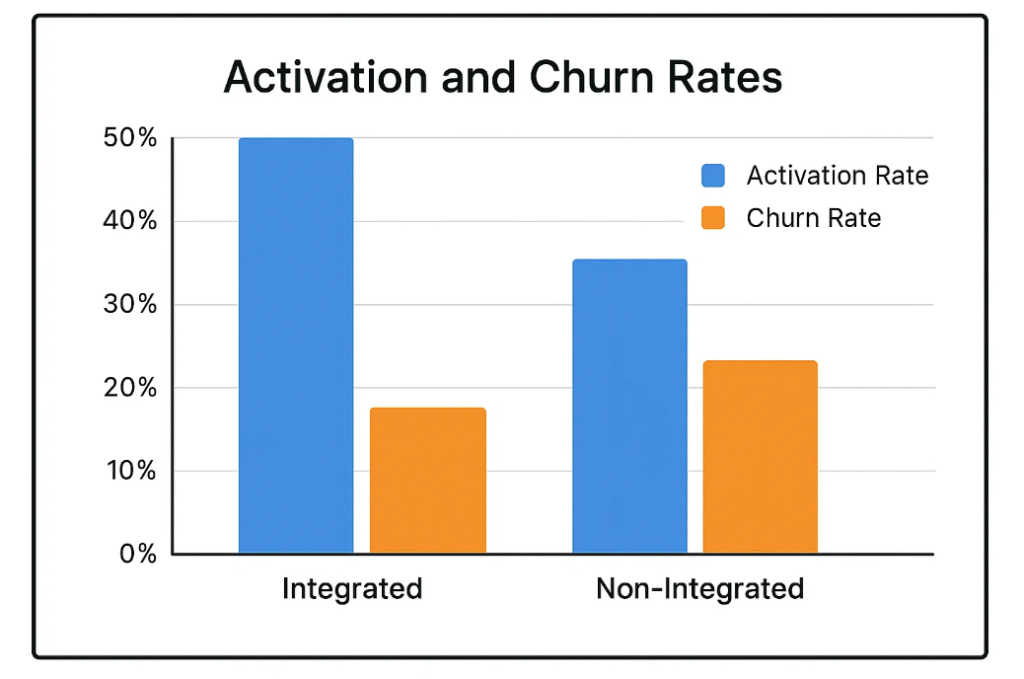
Can Integrations Influence Investor Confidence in a SaaS Startup?
Absolutely. Investors aren’t just evaluating your product—they’re analyzing your ability to scale.
When you demonstrate that your SaaS startup has a forward-thinking integration strategy, it signals:
- You’re attuned to market demands
- Your product has expansion potential
- You’re reducing churn risk
Why It Matters:
Investors know that SaaS products with rich ecosystems retain users longer and grow faster. When they see integrations with major tools (like Salesforce, HubSpot, or Stripe), they perceive you as enterprise-ready, even if you’re still early stage.
Example:
A YC-backed SaaS startup integrated with Zoom and Calendly during its pre-seed stage. This strategic move got them into sales enablement discussions with two mid-market players, accelerating their Series A raise.
How Can You Turn Integrations into a Competitive Moat?
SaaS is saturated. But your integration network can be your moat.
Here’s how:
| Tactic | Description |
|---|---|
| Deep Integrations | Go beyond surface-level syncs—build features that only work with connected tools |
| Exclusive Partnerships | Offer unique value with select platforms (e.g., priority access, joint features) |
| Custom Connector SDKs | Let partners build into you, not just the other way around |
| Marketplace Listings | Get visibility in your partners’ directories (e.g., Slack App Directory) |
Example:
A customer experience SaaS launched a native integration with Intercom that allowed support agents to trigger product actions from inside the chat window—something no other competitor could offer.
How Should SaaS Startups Measure the Impact of Integrations?
You can’t improve what you don’t measure. And integrations can quietly drive huge product success if tracked right.
Key Metrics to Track:
| Metric | Why It Matters |
|---|---|
| % of Users with Active Integrations | Shows adoption and dependency |
| Activation Rate Uplift | Compare users with vs. without integrations |
| Integration-Sourced Revenue | Revenue tied to use of specific integrations |
| Feature Usage | Engagement with features that rely on external tools |
| Support Tickets | Fewer tickets may mean smoother workflows post-integration |
Tip:
Set up event tracking (Mixpanel, Segment, GA4) around integration installation, config success, and daily usage.
What Role Do Integrations Play in Customer Retention?
Retention is the lifeblood of SaaS. And integrations make your tool sticky.
Once your product becomes part of a user’s ecosystem—talking to their CRM, billing tool, and email app—it becomes much harder to rip you out.
Psychological Impact:
Users don’t want to go through re-integrating new tools. If you’re part of their workflow, you’re “locked in”—in a good way.
Example:
A document automation startup reduced churn by 38% after launching a DocuSign integration. Once contracts could auto-trigger from within the tool, users stayed longer and used it more often.
How Can You Involve Your Customers in Your Integration Roadmap?
Building what customers need saves you months of guesswork.
Here’s how to gather intel:
- Integration Feedback Widgets:
Add a “What integrations do you want?” prompt in-app. - Feature Voting Boards:
Use tools like Canny or Nolt, where users can suggest/vote on integration ideas. - Onboarding Surveys:
Ask, “What tools do you use with [your use case]?” during sign-up. - Win/Loss Interviews:
Ask churned customers if a missing integration was the deal-breaker.
Example:
An accounting SaaS prioritized building a Xero integration after 41% of onboarding users selected it in a welcome survey. That one integration became responsible for 22% of their paid users within 90 days.
What’s the Risk of Over-Integrating Too Early?
Yes, there’s such a thing as too many integrations—especially if they’re shallow or buggy.
Risks of over-integrating:
- Support overhead for long-tail integrations that few use
- Codebase complexity with too many external dependencies
- Distracted roadmap pulled by niche customer demands
- Security surface area expands quickly
How to Avoid It:
| Stage | Strategy |
|---|---|
| 0–10 Customers | Focus on 1–2 iPaaS or API connectors |
| 10–100 Customers | Build top 2–3 requested native integrations |
| 100–1000+ | Launch integration partner program or SDK |
Tip:
Use middleware (like Tray.io or Make) to validate usage before building full integrations.

Should You Offer a Public API From Day One?
Short answer: Yes—but it doesn’t need to be massive.
Even a simple public API with a few endpoints gives power users and partners room to experiment, demonstrating your commitment to interoperability.
What to include in an MVP public API:
- Auth (token or OAuth)
- Basic CRUD for key resources
- Webhook support (optional but valuable)
- Simple, readable docs (Swagger or Postman is fine)
Example:
A survey platform launched with just two API endpoints—/createSurvey and /getResponses—but it enabled agencies to embed surveys into larger platforms, leading to $80K ARR in partner-led deals.
What’s an Integration Marketplace, and When Should You Build One?
Once you have five or more integrations, it’s time to centralize and showcase them.
An integration marketplace (aka integration directory) gives users:
- One-click installation for supported apps
- Filters to find tools by category (CRM, Finance, Support)
- Confidence that your product plays nicely with their stack
Benefits for You:
- SEO lift (each integration page can rank)
- Stronger brand positioning
- Reduced support load with guides and FAQs
Related Video: https://www.youtube.com/shorts/wj0GS0nqhaY
Example:
A SaaS onboarding tool launched its marketplace with just 7 integrations and saw time-on-site double for new users. Within six months, “integration” pages accounted for 18% of organic traffic.
SaaS Founders Toolkit Series: https://www.youtube.com/watch?v=BP81a0_6dtI&list=PLVQr4q_OlhZYyYtQcO59clWUHMv8WDOYL
Summary: Build Smart, Connect Early, Scale Confidently
Your SaaS startup’s integration strategy isn’t optional—it’s foundational.
Start lean, use third-party tools where necessary, build natively where it matters, and always prioritize user needs. Whether you’re bootstrapped or backed, integrations will multiply your retention, your reach, and your revenue.
Here’s your quick playbook recap:
| Stage | Key Integration Focus |
|---|---|
| MVP | Zapier + one key API |
| Early Growth | Top 3 integrations + Public API |
| Scaling | Native SDKs + Marketplace + Integration Team |
You might also like:



